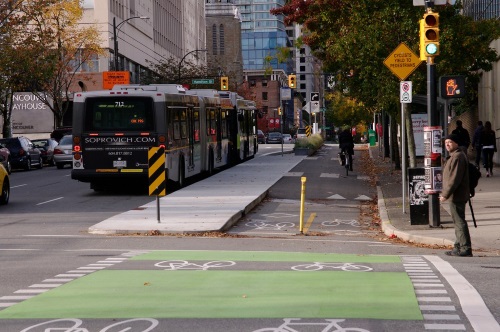A new report from British consulting firm Urban Transport Group indicates that the viability of mobility-as-a-service or MaaS as a global transportation strategy hinges on three key factors – one of them involving its ability to reduce traffic congestion.
The MaaS concept focuses on combining and accessing on-demand transportation options, such as car-sharing, ride-hailing and public transit, via a single digital platform – offering travelers mobility solutions based on their travel needs.

However, UTG’s research indicates that, at this stage, “MaaS could be a system that steers people towards use of cars or away from them. It could make travelling easier for all, no matter their income, disability or location or it could make mobility easier for tech-savvy, city center dwellers and harder for those who are already excluded and marginalized. It could be a great concept that takes off at scale or one that people don’t need or want in practice.”
The group’s report identifies three key factors that will determine whether MaaS can survive and grow as a transportation philosophy:
- The economic models underpinning MaaS systems will determine how impartial, stable, extensive, competitively priced they’ll be.
- How issues around the ownership, sharing, resourcing of transportation dataare resolved will determine how comprehensive MaaS systems will be.
- The extent to which wider environmental, social and public health goalsare built into MaaS systems will determine whether they will survive; largely by whether they contribute to making cities less congested, more inclusive, greener, and healthier places for residents.
“It is up to each transport authority to decide for themselves how big a role they wish to play in determining the evolution of MaaS depending on local circumstances and aspirations,” noted Vernon Everitt, a managing director at Transport for London and UTG board member, in a statement. “By presenting the risks and opportunities, we hope this report makes that decision making process easier.”
[The Federal Transit Administration is using its Integrated Mobility Innovation Demonstration program launched in May to fund projects that “transform the traveler experience” by developing and deploying technologies that improve mobility across all modes of travel with MaaS strategies in mind.].
UTG illustrated several of those “risks and opportunities” in its study, including:
- If the public sector is either the MaaS operator or a pro-active participant in MaaS, transport authorities would be able to ensure that MaaS is delivering a compelling consumer offer which also delivers a range of wider public policy goals, such as public health, air quality, congestion and social inclusion.
- If the public sector takes a stepped approach to MaaS, starting with existing resources such as journey planning, smart ticketing and real-time information to then build a platform, that would allow for different approaches – either public sector led or providing the basis for app developers and private sector third parties to integrate new transport modes or new ticketing products.
- If the private sector takes the lead, this result in a more innovative and competitive market of MaaS products and with no direct commercial risk to the authority. However, it also risks fragmented outcomes, or conversely exploitation by monopolies, which work against both the consumer and wider public interest.
A survey conducted by the Urban Transportation Center at the University of Illinois-Chicago this March for FTA found that of those state departments of transportation studying whether or not to develop MaaS strategies, most are engaging in that effort through public transit operations.
The 40-page FTA study found that statewide mobility management networks have a “strong public transit component” and MaaS efforts are either led by associations of public transit agencies or by the public transit department within a state DOT.

The study also found that the main challenges facing the establishment of mobility management networks include: coordination at various geographic levels; securing adequate funding and ensuring that funders perceive that their dollars are well spent; performance/outcome measurement of the impact of the network(s); and onboarding/training of mobility management professionals.
Yet the advantages of such strategies impact rural and urban areas alike, as both still lack “seamless integration” among varying modes of transit, with gaps that include geographic, time-of-day, and accessibility for those with physical or developmental disabilities, or who otherwise require additional assistance to navigate public transportation.
The UTC study suggest that a decrease in service gaps as measured by a decrease in the percentage of the population living in “unserved” areas is one outcome measure that could be incorporated into state-level mobility management performance measures.
 Nation
Nation
Registration Open for 2026 AASHTO Washington Briefing
December 12, 2025 Nation
Nation

